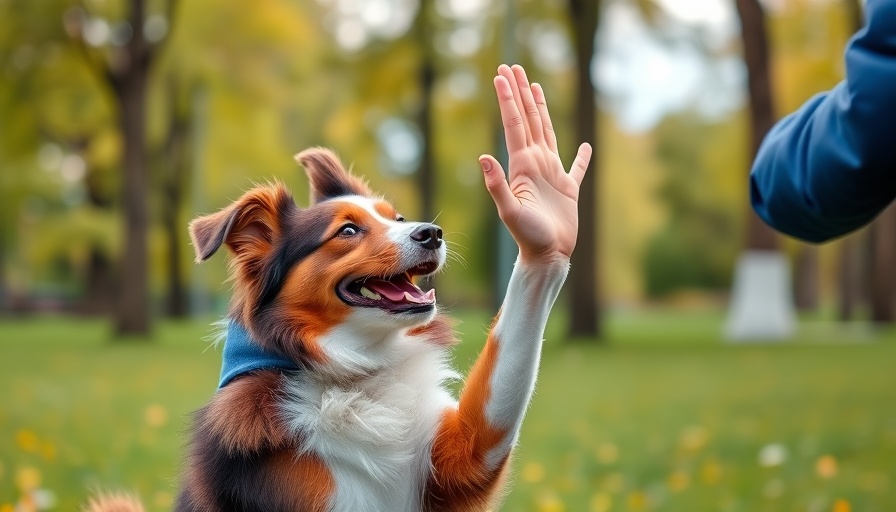
Understanding the Importance of Obedience Training
Whether you've welcomed a spirited puppy or a gentle adult rescue into your home, obedience training is essential for a lasting, joyful bond with your pet. This framework of mutual understanding fosters trust and cooperation, making daily life more harmonious. The heart of effective training lies in its focus on positive reinforcement, which enhances both learning and enjoyment for your dog.
The Science of Positive Reinforcement
The most effective approach to dog training is rooted in science, particularly the principles of positive reinforcement. This method encourages dogs to engage with behaviors that yield rewards, such as treats or praise. Unlike outdated techniques that rely on punishment or negatives, this friendly approach promotes learning in a fun environment. Dogs respond splendidly to an upbeat atmosphere filled with encouragement, creating a win-win situation for both the trainer and the canine.
Potty Training: Starting Off Right
One of the first challenges any pet owner faces is potty training. Since dogs don’t inherently know where to go, it’s crucial for owners to guide them through the process. Start from day one by closely supervising your pup or adult dog's outdoor time and offering treats when they successfully eliminate outside. Keeping a keen eye on their body language can also be immensely helpful; learning the signs that indicate your dog needs a break will set them up for success.
Crate Training: A Safe Haven
While the idea of crate training may raise eyebrows, it can be a wonderful refuge for your canine. When properly introduced, a crate becomes a comforting space that provides security for your dog. This practice not only aids in potty training by keeping them contained when unsupervised, but it also allows them a spot to relax when life gets overwhelming. Always choose a crate that is appropriately sized and accompany it with treats and toys to help transform it into their favorite nook.
The Art of Leash Training
Leash manners are essential for a pleasant walking experience. Teaching your dog to walk without pulling is crucial for safety and enjoyment. Begin leash training by using short, fun walks, encouraging your dog with treats for walking beside you instead of pulling ahead. This not only strengthens your bond but keeps both of you safe and secure during outdoor adventures.
The Emotional Benefits of Training
Training goes beyond just teaching commands; it also builds an emotional rapport between you and your furry friend. Each training session is an opportunity to create lasting memories filled with laughter and love. Engaging in these activities showcases the unique personality of your dog while reinforcing their understanding of the household rules.
Common Misconceptions And Myths
Many people harbor misconceptions about dog training, often believing they must dominate their pets to be effective. This myth is false and can lead to detrimental impacts on the relationship between pet and owner. Instead, emphasizing collaboration and respect can pave the way for a loving and understanding partnership.
Practical Tips for New Dog Owners
For those embarking on their dog ownership journey, here are several practical tips to keep in mind:
- Consistency is Key: Use the same commands and reward methods regularly to avoid confusing your dog.
- Be Patient: Training takes time; every dog learns at their own pace. Celebrate small victories!
- Stay Engaged: Keep training sessions lively with short bursts of fun activities to hold your dog’s attention.
- Learn from Others: Consider joining dog training classes or online groups to connect with fellow dog parents going through similar experiences.
The Community Connection: Building Bonds
Dog training doesn’t just nurture the pet-owner relationship; it also fosters community. Engaging with other dog owners during social outings, group training sessions, or at parks can solidify friendships and networks aimed at responsible pet ownership. Together, dog lovers can share resources, learn from each other’s experiences, and create a supportive environment – benefiting everyone involved.
Embarking on the journey of obedience training for your dog is more than just a chore; it's an adventure filled with fun, challenges, and invaluable rewards. With each positive step taken, you are not just shaping your dog’s behavior, but you’re also nurturing the bond that turns a house into a home. Dive into this rewarding journey of obedience training and watch as your furry friend flourishes!
 Add Row
Add Row  Add
Add 


Write A Comment